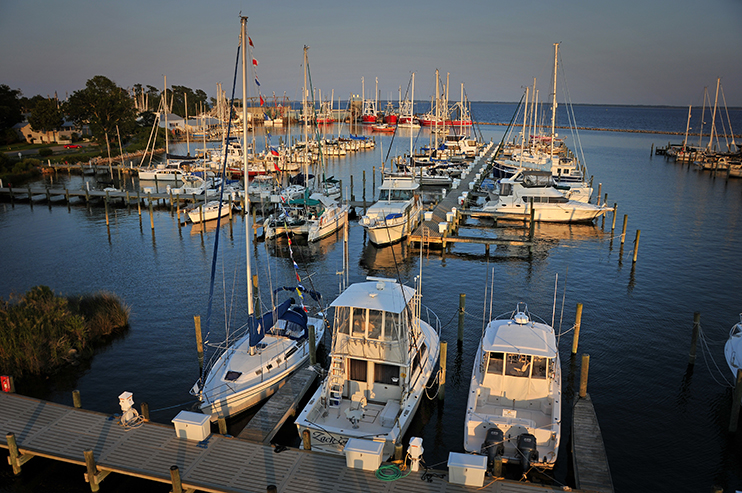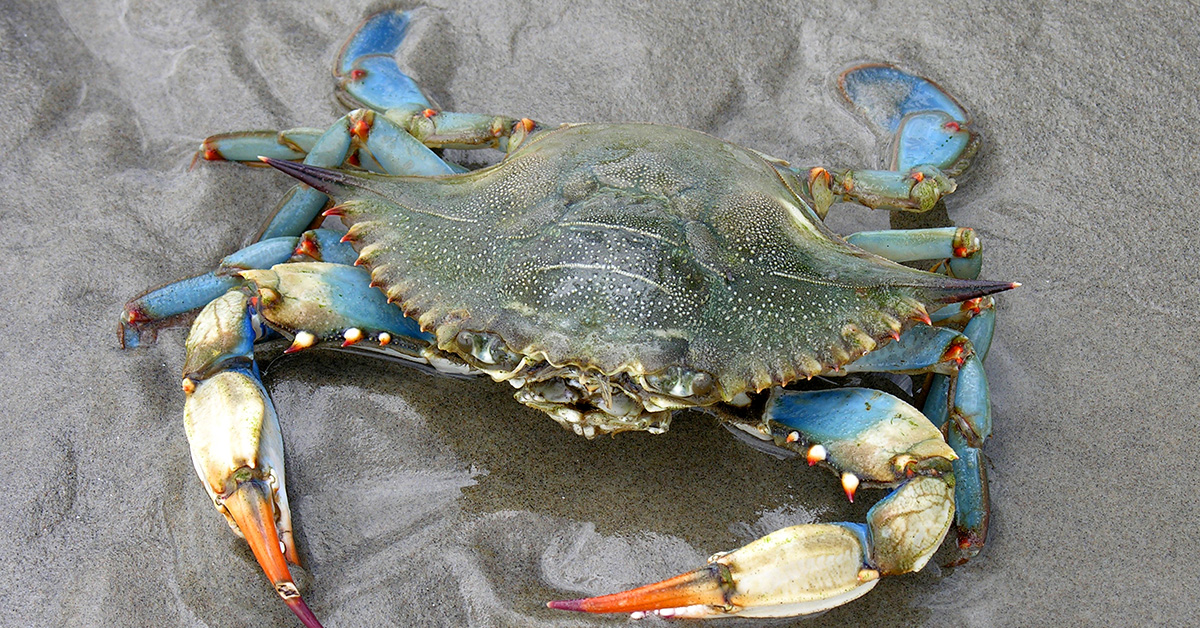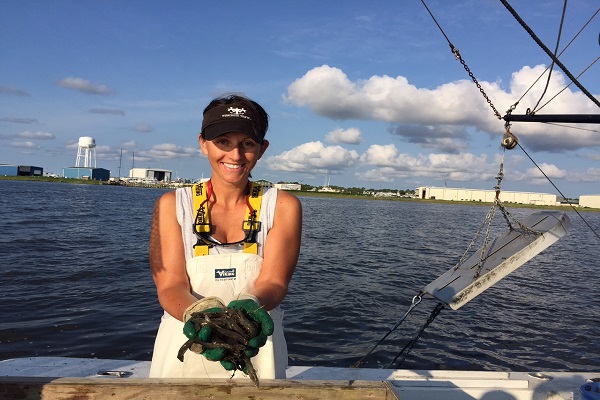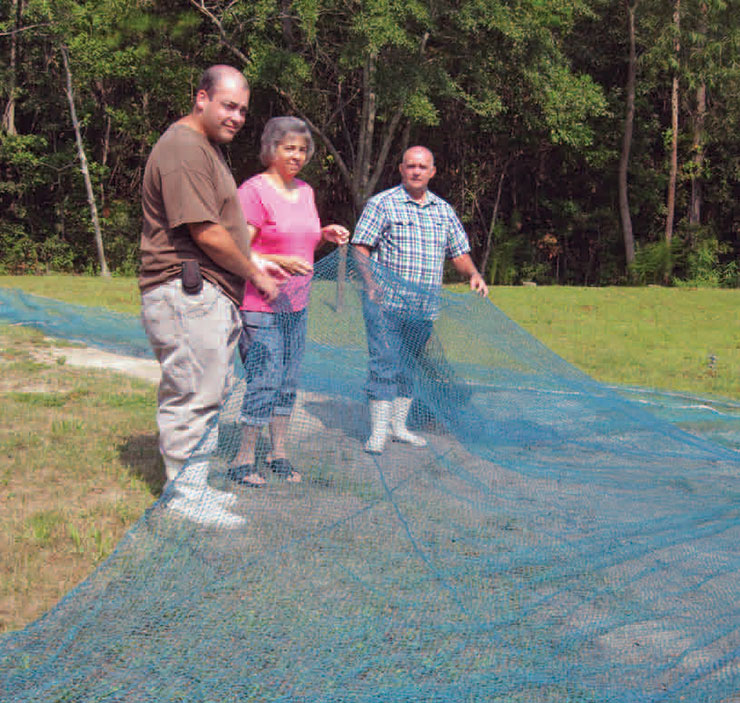ONE-STOP SERVICE: Marine Parks Cater to Boaters

When True World Marine president Takeru Kamiyama began looking for a new location for a manufacturing facility, intuition told him that a North Carolina site would meet his needs.
“The climate, properly and taxes were right in Carteret County,” says Patrick Kirkbride, secretary of the company.
The overhead and property taxes were much higher at an exisiting facility in New Jersey, he adds. The company relocated its manufacturing plant to Jarrett Bay Marine Industrial Park in Beaufort.
“We have a history of making large fiberglass boats for recreational and charter boat fishermen,” says Kirkbride, who hopes to expand True World Marine’s clientele.
And in North Carolina, the company also has other boat builders, marine-related suppliers and boat repair companies for its neighbors.
“In New Jersey, the plant was in an industrial area,” says Kirkbride. “The closest boat builder was 150 miles away.”
Businesses like True World Marine are drawn to Jarrett Bay’s prime location on the Atlantic Intracoastal Waterway (ICW) about eight miles from the Atlantic Ocean, according to Dave Inscoe, executive director of the Carteret County Economic Development Council.
“When boaters are going north or south and not traveling in the ocean, they come by here,” says Inscoe.
Out-of-State Businesses
True World is one of several marine companies that have relocated to the Jarrett Bay park.
After 20 years in Palm Beach County, Fla., the owners of Moores Marine, which restores antique and classic wooden sailboats and yachts, decided to move most of its operations to Beaufort.
The company couldn’t secure a lease on the waterfront in Palm Beach County, according to Jim Moores, president of Moores Marine. “Florida waterfront property is so precious,” he says. Boat companies are being pushed out for condominiums and other development, he adds.
In 2006, Moores bought waterfront property in Carteret County for $390,000. Because Jarrett Bay Park is outside of the region designated for special hurricane riders by some insurance companies, clients can bring wooden boats there during the hurricane season.
North Carolina also has a large workforce that is skilled in wooden boat construction. “You have Markers Island and its skilled boat builders,” adds Moores, whose carpenters restore upscale wooden yachts, including the high-end Trumpy line that was last produced in 1973.
Aviation pioneer Howard Hughes owned a Trumpy, now known as the Eleanor. Every president from Herbert Hoover to Jimmy Carter cruised on the former presidential yacht Sequoia.
After the buildings are completed, Moores Marine will have 16 to 25 employees and will have invested more than $2 million in the new property. “We are already marketing our North Carolina facility,” he says. “We have eight prospective projects.”
Moores says his clients want certain amenities that are available in Carteret County. “You have to deal with the captains and crew and entertain them he adds. ‘They needed a private airport and restaurants. Beaufort has everything that my clients need.”
State’s Valuable Resources
Carteret County is not alone in its efforts to attract new marine businesses. Because of the loss of jobs in the state’s textile, tobacco agricultural industries, North Carolina economic development recruiters are targeting marine trade businesses.
“Marine business parks diversify local economies while providing jobs to those in dwindling traditional industries like commercial fish and tobacco,” explains Brian Efland, North Carolina Sea Grant coastal business specialist.
As a marine trade specialist with the N.C. Boating Industry Services with the Small Business & Technology Development Center (SBTDC), Mike Bradley is continually pitching the state to national, international marine-related businesses. The state of North Carolina the Small Business Administration provide funding for the SBTDC.
“I have several boating companies that I am talking to now about locating in eastern North Carolina,” Bradley says.
The state’s financial incentives include the Williams S. Lee tax credits, enacted in 1996 and amended in 1998, that provide tax credits for job creation, investment, worker training and research an development. The credits are available to businesses in the state’s 11 counties and are based upon a county’s level of economic distress.
As part of other state programs, manufacturing companies ca apply for industrial revenue bonds when purchasing real estate, or for construction and equipment.
In addition, there are other incentives — from community block grants to an Industrial Access/Road Access Fund for construction of roads to new or expanded industrial facilities.
“Incentives only provide a starting point for talking,” says Bradley. “It is one of many components. The availability of a workforce is more important.”
Also, a waterfront location is critical for yacht building, along with boat restoration and repair companies, he explains.
Although North Carolina coastal waterfront property is cheaper than some other states, land here, as well as its tax burden, has become unaffordable for some small traditional business owners and commercial fishing captains.
The state’s new Waterfront Access Study Committee, authorized by the N.C. General Assembly, is studying the loss of parcels for water-dependent and access users along the state’s coastal waters.
“it is key that businesses dependent on the waterfront have access to it,” says North Carolina Sea Grant executive director Michael Voiland, chairperson of the waterfront committee. “At the same time, access to public trust waters of the state is critical for so many kinds of recreational activities enjoyed by the public as a whole.”
“The General Assembly clearly wants ideas as to how such access and diversity of waterfront uses can be preserved or enhanced,” he adds.
Other Marine Parks
North Carolina is home to three marine industrial parks, including Jarrett Bay. Wilmington Marine Center, which opened in 1992, is near Marker #59 on the Cape Fear River — about seven miles north of Snow’s Cut on the ICW and three miles south of downtown Wilmington.
The center has a 102-slip marina and a variety of businesses, including a yacht service company, chart and ship supply company, fabricators and welders, dock manufacturers, as well as boat builders and diesel mechanics. The on-site service operation has a 75-ton mobile lift and a marine railway that can accommodate vessels up to 450 tons.
“The marina itself is full,” says general manager Skip Fry. “But we have about a quarter-mile of waterfront and 41 acres for future expansion.”
In Dare County, Wanchese Seafood Industrial Park also is full, according to director Bob Peele.
The park — which operates under the N.C. Department of Commerce — has a variety of seafood and boatbuilding businesses, as well as a wastewater treatment plant and trawl supply store.
Located on the southern end of Roanoke Island on the Wanchese waterfront, the park is about five miles from Oregon Inlet.
A 2005 Economic Analysis of the Wanchese Seafood Industrial Park found that the park contributes more than $65 million per year to the Dare County economy.
Growing Boating Industry
Most of the businesses at the state’s marine parks cater to the growing recreational boating industry.
In the United States, the number of recreational boaters grew to 18 million in 2005, a net gain of 340,000 from 2004, according to the National Marine Manufacturers Association (NMMA).
In 2004, North Carolina had more than 350,000 recreational boat registrations, putting it in 11th place in the NMMA rankings.
And boaters across the country continue to purchase slightly larger, better-equipped boats. In 2005, the average boat price increased by 8 percent compared to sales in 2004, the association found.
Jarrett Bay Boatworks designs custom sportfishing boats for the growing industry. In 1998, it became the first tenant of Jarrett Bay park.
At that time, Don Kirkman, former director of the Carteret Economic Development Council, persuaded Randy Ramsey of Jarrett Bay Boatworks to move to the new marine park.
“Our business had outgrown our current location in Marshallberg,” says Ramsey. So with the support of its bank, the county and town of Beaufort, the company was able to relocate, he adds.
Jarrett Bay Tour
On a recent day, Inscoe gives a tour of the park that is on N.C. 101 about six miles north of Beaufort. He says the park offers a variety of services — from custom-made boats and tuna towers to repair and transmission work.
Inscoe stops at the boatyard in the middle of the park where several large boats are waiting to be repaired, including a large sailboat from the state of Washington and a commercial fishing boat from Maine.
At Powell Brothers Maintenance, Jody Powell is repairing a shrimp trawler.
“We focus on the commercial industry,” says Powell. “We work on trawlers, headboats, barges, tugs and the occasional steel or aluminum yacht.”
Many of the boats are lifted out of the waterway with a 50- or 220-ton travel lift. In 2005, the boatyard lifted more than 1,000 boats for repairs and storage, according to Dan Carraway of Jarrett Bay Boatworks, the park’s largest company with 123 employees.
Inside the Boatworks’ main office, Carraway shows a glossy brochure featuring upscale sportfishing boats. The company builds semi-custom and custom boats that range from $300,000 to more than $3.5 million.
Then Can-away, the company’s personnel director, walks over to a large map of the park.
“Jarrett Bay owns 35 acres in the park,” he says. “Ninety-eight percent of the land is sold at the park.”
As Inscoe drives to True World Marine, he says that the company brings an international flavor to the park.
“It is an American company with a Japanese president,” he adds.
The new 20,000-square foot facility overlooks the ICW.
Once the company goes into full production, it will be turning out several boats a month, according to service manager Mike Tsurusaki.
The next stop is Gregory Poole Marine Services where marine engines are so large they nearly take up an entire room about the size of a single-car garage.
“The Caterpillar engines have 1,825 horsepower and are used in custom sportfishing boats and Hatteras yachts,” says Dan Webb, general manager of Gregory Poole Marine Services in Beaufort. “We just put two engines with transmissions in one boat. They weighed about 15,000 pounds.”
Nearby ZF Marine services transmissions that range from 18 feet for sailboats to 300 feet for freighters.
The park has grown tremendously, according to Billy Staples, technical representative for ZF Marine in Beaufort. “Four-and-a half years ago, there were only three facilities here,” he adds.
The company — which has offices around the world and builds transmissions at other sites — opened a facility in Carteret County because of the large number of local boat builders. “We cover the industry from Charleston to Norfolk,” adds Staples. “This area is very convenient.”
The marine park also has start-up companies like Core Creek Marine LLC, which repairs boats of all sizes.
“I had a large metal fabricator business in Forsyth County,” says owner Jim Flynt. “When I closed my business, it made sense for me to do boat repairs because I had worked on my own boat for many years.”
So Flynt opened a business at Jarrett Bay industrial park where he employs six full-time workers and six others on a subcontract basis.
“Our workers come with skills picked up in boat-related jobs that are so much a part of the boat-building heritage of the Down East area,” he says of the region east of Beaufort.
With the surge in marine trade industry in North Carolina, recruiters are looking for more waterfront property to develop new marine parks.
“We are just seeing the tip of the iceberg,” says Inscoe. “This area is attractive because it is in the central part of East Coast. The future is bright. We are trying to create another marine park in Carteret County.”
This article was published in the Winter 2007 issue of Coastwatch.
For contact information and reprint requests, visit ncseagrant.ncsu.edu/coastwatch/contact/.
- Categories:


